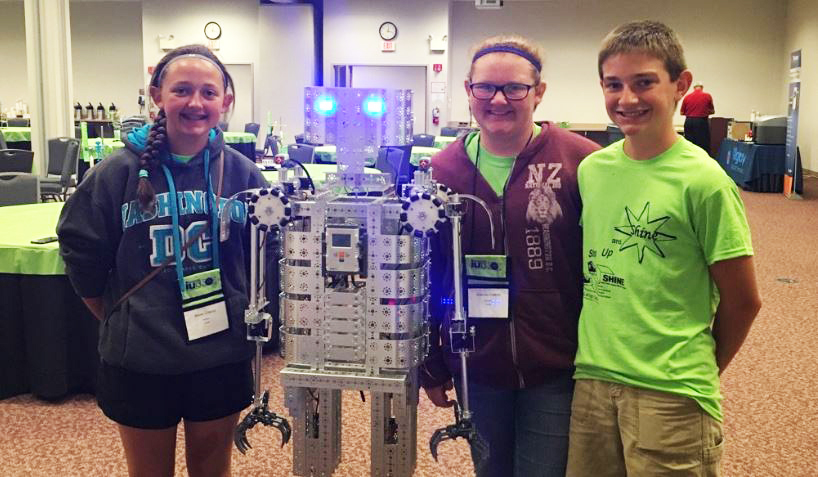 |
When making the case for afterschool STEM, one point often pops up: STEM learning experiences teach kids essential skills for their futures in college and careers. But how does that skill-building actually happen? And what strategies should afterschool programs use to harness it?
A new article from the American Youth Policy Forum (AYPF) highlights afterschool STEM programs that focus on career and college exploration initiatives. As part of STEM Ready America compendium, which features more than 40 authors, “Career and College Exploration in Afterschool Programs in Science, Technology, Engineering, and Mathematics” provides examples of afterschool and summer learning STEM programs that are preparing youth for their futures and supporting their engagement with the STEM field. Developed by STEM Next, with support from the Charles Stewart Mott Foundation, STEM Ready America discusses the importance of access for quality STEM programs, the evidence behind these programs, and the partnerships that make STEM learning successful.
In the article, AYPF highlights the best practices of three afterschool and summer STEM programs that intentionally introduce students to STEM fields, prepare them to study or have a career in a STEM field, and build skills that will benefit them in the workforce. Looking at SHINE (Jim Thorpe, Pa.), EVOLUTIONS (New Haven, Conn.), and Project Exploration (Chicago, Ill.) AYPF concluded that successful programs:
- Have an intentional and consistent focus on STEM. One-and-done STEM activities aren’t enough to inspire student interest in STEM. Providing consistent and focused opportunities for hands-on STEM learning can help students build confidence in STEM activities and encourage students to pursue STEM fields in the future.
- Prepare students for, and educate students about, college. Afterschool and summer programs can work to inspire youth and expose them to new possibilities for their futures. Though college visitations and discussions on education pathways, students can gain exposure to new, unrealized possibilities for their futures.
- Expose students to new career pathways and connect learning to career readiness. Partnering with STEM professionals to speak to and work with youth can help expose youth to STEM careers. Working in groups and giving presentations are often featured in afterschool and summer learning programs; connecting these activities to workplace skills for students can connect their efforts now to their futures.
Research has shown that participation in high-quality STEM afterschool and summer programs builds student interest in STEM, confidence in STEM skills, and increases accessibility to STEM learning for underrepresented populations of students. The above recommendations can help programs become more intentional about their STEM learning opportunities and provide high-quality STEM programming to support student success. For more information on evaluations examining afterschool and summer learning programs’ effect on youth outcomes, visit the Afterschool Impacts Database, where you can learn more about STEM-focused afterschool programs, such as SHINE and EVOLUTIONS, as well as find evaluations of programs in your state.
You can read the full report and the rest of the STEM Ready America compendium online.
Comments are closed.